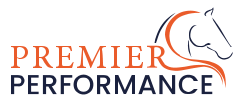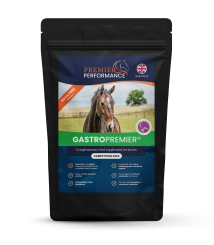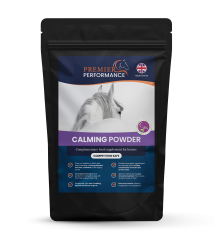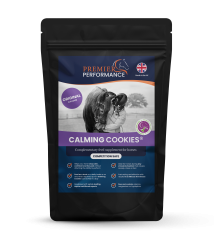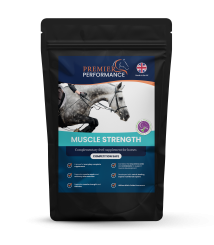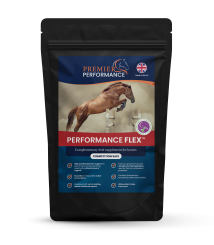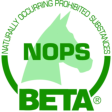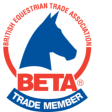in basket
TOP OFFER - SUMMER20 - 20% OFF and 4 FREE seasonal products!
Feeding the dressage horse

A dressage horse needs to be powerful and athletic along with having a high level of concentration and obedience. In terms of the work that a dressage horse is required to do, it could be described as a cross between a weightlifter and a ballet dancer, which necessitates the development of muscle. In human athlete’s nutrition is regarded as playing a significant role in health and performance and it is no different in horses. In terms of the dressage horse, the diet provided needs to meet nutritional requirements of the individual, whilst maintaining gut health, promoting calm behaviour, and supporting muscle development and joint health.
Nutritional requirements for your dressage horse
The foundation of good nutrition is a balanced diet that ensures your horse receives all of the essential nutrients needed on a daily basis. As discussed in my article on the rules of feeding, the nutritional requirements of a horse depends on a number of factors, including; age, size, body condition, life stage (e.g. if your horse is still growing, pregnant or lactating), breed and workload. The horse’s diet also needs to account for any underlying health issues. Horses need to be provided with six classes of nutrients: carbohydrates, fat, protein, vitamins, minerals and water. Energy is not a nutrient itself, but rather is obtained from fat (oil) and carbohydrates (CHO) and is required to maintain the body’s many vital functions and as fuel for exercise. Some energy can be obtained from protein, but this is an inefficient process and as such is a very expensive way of providing energy in the diet. Excess protein in the diet can also lead to some undesirable effects including increased urea levels in the blood, leading to greater urea excretion into the gut, potentially increasing the risk of intestinal disturbances.
As I have talked about in previous articles, horses have evolved to eat a diet high in fibre, which is required to maintain gut health and to meet the behavioural needs of an animal that is designed to eat on an almost continual basis. Therefore, many horses will obtain their energy from their forage source. The majority of CHO in forage is referred to as structural CHO, also referred to as fibre. Fibre is the constituent of the forage that contains CHO that cannot be digested by the enzymes in the horse’s small intestine. These CHO sources are known as cellulose, hemicellulose and pectin. The microbes in your horse’s hindgut breakdown the fibre and produce volatile fatty acids (VFAs) as a by-product of this process. These VFAs are then absorbed across the gut wall and used as an energy source by the horse. Conversely, non-structural CHOs, such as starch and simple sugars are broken down by enzymes in the horses small intestine and the sugars released are absorbed as an energy source. Fat is another source of energy for horses, this is also digested in the small intestine.
After water, protein is the second major component of body tissues. Proteins are composed of amino acids that are individual units that combine to make up the protein. There are 22 amino acids that are structured in different ways to make proteins of different sizes and shapes and with a variety of functions. An example of a muscle protein is myosin, which helps with muscle contraction. Another example of a protein is haemoglobin, which carries oxygen in the blood. The horse needs to have protein in his diet because although some amino acids are made in the body, others are not, and these are called the essential amino acids. The essential amino acids for horses include lysine, methionine and threonine and these need to be supplied in your horse’s diet. If these essential amino acids are not provided this means that certain proteins cannot be formed. From what we know, it appears to be the protein that is digested in the small intestine of the horses is of direct benefit to the horse. Protein that escapes digestion in the small intestine will enter the large intestine where it will be used primarily by the microbial population.
Vitamins and minerals are also essential nutrients required by horses. Horses only need relatively small quantities of vitamins and minerals; however, an imbalance of these can be detrimental to your horse’s health and performance. Providing adequate vitamins and minerals in your horse’s diet is not an added bonus, but rather an absolute must as they are essential for your horse’s health. Unfortunately, vitamin and mineral supplements are the most undervalued and underused supplement. You may not see the difference of feeding a vitamin and mineral supplement straight away, but your horse will feel the benefit. Moreover, your horse’s long-term health and performance may suffer as a result of you not providing adequate vitamins and minerals in his/her diet. We recommend considering a supplement such as Performance MultiVitamin.
Water is an essential component of your horse’s diet; 65 to 75% of an adult horse and 80% of a foal’s bodyweight is comprised of water. Water is required for a number of life-supporting functions, including digestion and thermoregulation. Therefore, it’s important to ensure horses have access to water at all times and a plentiful supply especially in hot weather. In performance horses, it is advisable to add electrolytes into the diet. The major electrolytes include sodium, potassium, chloride, calcium and magnesium. Even when your horse is resting, he or she will lose electrolytes through faeces, urine and their breath. During exercise electrolyte loss is increased through sweating. Sweating is how your horse regulates his or her body temperature, but the loss of fluids and electrolytes needs to be accounted for in the diet, especially at times of the year when it is warmer weather and your horse will sweat even more during exercise.
Gut health in the dressage horse
I have discussed gut health a lot in previous article, so I won’t go into this in huge detail again here, but just to reiterate that your horse’s gut plays such an important role in maintaining health and wellbeing. The gastrointestinal tract works hard to digest feedstuffs, make essential nutrients that the horse can’t produce on its own, protecting your horse from disease and even shaping the behaviour of your horse. Thus, it is vital to maintain gut health and to ensure you are managing your horse in a way that promotes gut health through an understanding of the anatomy and physiology of the equine gastrointestinal tract.
It is well recognised that stress can impact on gut health and in dressage horses that are travelling, staying away from home, and competing, this can take a huge toll on gut health. Sudden changes to diet can also cause gastrointestinal disturbance and should be avoided. Any dietary changes should be made gradually as even a simple change to the forage source can impact on gut health; for example, if your horse is being stabled overnight at a competition then it is advisable to take your own forage with you to prevent any gastrointestinal distance due to a change in diet. Even if you feed hay and the stables have hay, this will not be of the same nutritional composition and may lead to gut issues. Feeding a fibre-based diet is essential in maintaining gut health and diets low in starch are also advocated for maintaining gut health as well as supporting calm behaviour. It may also be of benefit to feed a supplement that supports gut health, especially around times when management and routine may be changing due to competitions etc.
Behaviour in the dressage horse
As discussed in my previous article, understanding normal horse behaviour helps avoid the development of behaviour problems that may result from inadequate management routines and a lack of understanding of how the horse ‘perceives’ their world. In terms of the management factors that can impact on behaviour, there is increasing research into the impact that a horse’s diet can have on their behaviour. The old saying “he’s feeling his oats” certainly suggests that over the decades people have found horses fed oats, which are high in starch, to be more “on their toes” and more likely to react (or spook) compared to when they are not fed oats. It was often suggested that this may be due to the increase in the amount of energy provided in the diet. However, many of us will have owned or known of a horse that is a bit “lazy” and lacking in forwardness and will no doubt have tried to add additional energy to the diet to address this. What you have likely found is that your horse is no more forward going but is much more likely to spook.
However, recent work at the University of Glasgow has shown that horses fed diets containing starch, such as concentrate feeds containing cereals grains (oats, barley, maize), are likely to be more reactive (“spooky”) than those horses fed a fibre-only diet. When horses are fed the same amount of energy but in different forms, starch versus fibre, their heart rates and reactiveness are greater when fed starch compared to fibre-only. Horses fed starch were less predictable in their behaviour compared to those fed a complete fibre diet and were therefore more difficult to handle. The horses on the fibre-only diet were also more settled and less reactive compared to those fed starch. The group of horses fed the starch feed were also observed to be more tense, nervous and unsure about their surroundings. It is important to note that the amount of starch that was fed was less than many leisure horses receive in their ration, which shows that even small amounts of starch in the diet can have a significant effect on your horse’s behaviour. Therefore, a fibre-based diet alongside supplementary feeds that are low in starch, is recommended for dressage horses given the need for them to be calm and to be able to concentrate on their work.
An anxious horse can develop behaviours that affect their behaviour, making them more difficult to handle or train. A horse that is difficult to work with or ride can be more at risk of injuring themselves or the person handling or riding them. Therefore, it is important to try and resolve this. The first approach to calming your horse is to assess his management and training, sometimes a simple change in these areas can resolve any issues. If you find that your horse is still anxious, and you have consulted your vet on any possible health issues that may be related to this, then you may want to consider using a high quality calmer such as Premier Performance Calming Powder. A calmer, may also be beneficial for horses that are anxious about traveling or the competition environment itself.
Muscle development in your dressage horse
Your horse’s body contains a large amount of muscle, which makes up between 40 and 55 percent of their total body weight. Muscle itself contains around 70 percent water, 20 percent protein and 10 percent fat, glycogen, vitamins and minerals. However, proteins make up the majority of solid skeletal muscles and, therefore, are of particular interest in performance horses. It takes time and effort to build muscle in your horses and understanding the factors that help a horse to build or lose muscle can be of great benefit in training. Muscle mass is determined by protein synthesis and breakdown (also known as protein turnover) and this happens simultaneously. During exercise there is an increase in muscle protein turn over, which means that the body breaks down the protein and then re-synthesises it. This process is an important cycle of events for building muscle and therefore the greater protein turnover results in increased muscle mass. There are a number of factors that affect muscle mass including, age, health status, hormones, medications, level of physical activity, and nutrition.
The amount of protein a performance horse requires in his diet has been the subject of much debate; however, it is generally believed that exercised horses have higher protein requirements compared to horses that are not in work. It is important to be aware that overfeeding protein does not result in improved performance as excess protein is broken down and excreted in urine. On the other hand, if protein intake is insufficient this could result in poor performance, weight loss and poor muscle tone. Therefore, it is important to get the balance right. There is also evidence that synergistic effects of exercise and nutrition can have a positive effect on protein turnover in muscles, potentially increasing muscle mass.
Branched Chain Amino Acids, also known as BCAA, are a group of three essential amino acids: leucine, isoleucine and valine. These are known as branched chain amino acids due to their structure, which has a chain that branches off to one side. During the recovery period after exercise, muscle protein synthesis takes place to repair muscle tissue damage that occurred during exercise. It has been reported that supplementing your horse’s diet with BCAAs can have a positive effect on the rate of protein turnover as well as reduce muscle damage following exercise. BCAA supplementation can also help enhance metabolism, which can improve exercise performance as well as recovery during exercise.
Your dressage horse's joint health
Your horse’s joints comprise two bone ends covered by articular cartilage (provides cushioning to the joint) encased within a joint capsule (or sac). The inner layer of the sac, which is called the synovial lining, secretes synovial fluid that provides lubrication and prevents friction between the bones. The articular cartilage is made up of collagen, proteoglycans and water. Proteoglycans consist of chains of glycosaminoglycans, which are a type of carbohydrate attached to a protein to provide strength to the cartilage. Chondroitin sulphate is a glycosaminoglycan and is a key component of proteoglycans. Synovial fluid contains hyaluronic acid (also a glycosaminoglycan) and a protein called lubricin.
Joints are challenged every day in performance horses (particularly dressage horses) as part of normal wear and tear, which can lead to joint issues associated with inflammation and degradation of the articular cartilage and the development of degenerative joint disease or osteoarthritis. Osteoarthritis (degeneration and loss of articular cartilage) is one of the most common causes of lameness and poor performance in horses. Diet has a limited effect on joint health after one year of age; however, a poorly balance diet can contribute to the onset of joint issues in horses. Therefore, it is important to provide a balance site that meets your horse’s daily requirements and a joint supplement may help or prevent the onset of joint disease.
The use of joint supplements to treat or prevent joint health issues has grown in popularity in recent years. There are many equine joint supplements to choose from containing a range of ingredients. Chondroitin sulphate is commonly included in joint supplements, this is a component of proteoglycans and there has been some debate over its bioavailability (the amount that enters the circulation) in horses. Studies in other species suggest that the majority of chondroitin sulphate is degraded in the large intestine and therefore this may be similar in horses.
Glucosamine forms part of the structure of the glycosaminoglycan chains found in proteoglycans and studies have shown this to be absorbed in the intestines. Glucosamine supplementation has been suggested as helpful in the synthesis of glycosaminoglycans. Combining chondroitin sulphate and glucosamine may have complementary effects on the maintenance of joints given that both important substances in cartilage formation and there is some evidence to suggest that these are more effective when given in combination than alone.
Methyl sulphonyl methane (MSM) is an organic from of sulphur, which is generally present in horse feeds and can support collagen synthesis. Hyaluronic acid is a key component of synovial fluid and it is suggested that the addition of this to a supplement containing chondroitin sulphate and glucosamine may improve joint health in some horses. Omega-3 fatty acid supplementation has also been reported as beneficial in reducing joint inflammation. Linseed oil and cod liver oil is high in omega-3 fatty acids, whereas other vegetable oils are generally high in Omega-6 fatty acids, which are pro-inflammatory. Therefore, supplementation with omega-3 fatty acids may also be beneficial in maintaining joint health.
Overall recommendations for supporting your dressage horse
- Feed a fibre-first diet
- Avoid feeds containing starch, where possible
- Ensure nutrient requirements are met and provide a balanced diet
- Make any dietary changes gradual
- Ensure adequate electrolytes are provided in the diet
- Consider the use of a supplement(s) that can help maintain gut health, support joint health and muscle development, and promote calm behaviour
Article written for Premier Performance by Professor Jo-Anne Murray.
